Worksheet Solutions: Shapes Around Us (3D Shapes) | Worksheets with solutions for Class 2 PDF Download
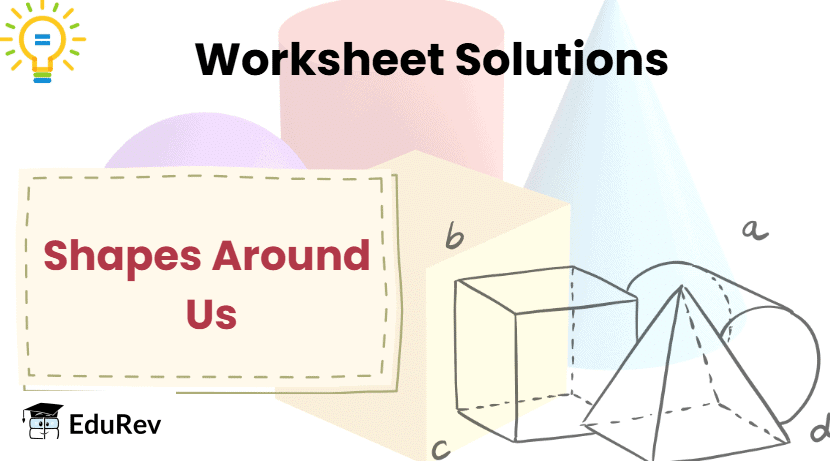
Q1: Circle the 3D shapes that stack.
(i)

(ii)

(iii)

(iv)

(v)

(vi)

Ans:
(i)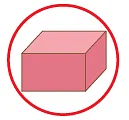
(ii)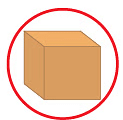
(iii)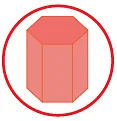
(iv)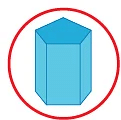
Q2: Match the following:
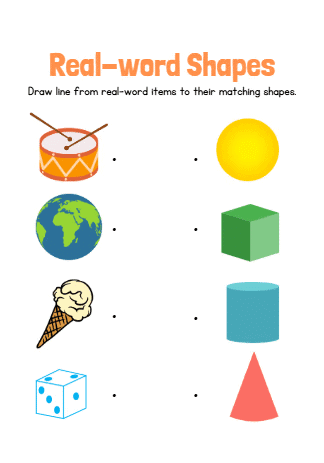 Ans:
Ans: 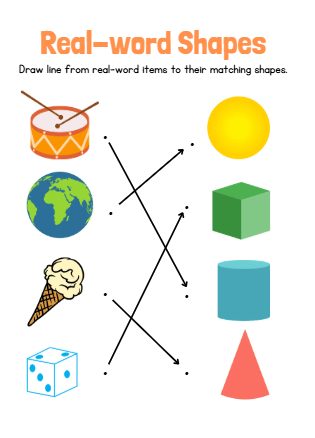
Q3: Find out the 3D shapes that roll
(i)

(ii) 
(iii)

(iv)

(v)

(vi)

Ans:
(i)

(ii) 
(iii) 
Q4: Fill in the blanks:
 (i) The cube and the cuboid each has _________ plane surfaces, _________ edges, and _________ vertices.
(i) The cube and the cuboid each has _________ plane surfaces, _________ edges, and _________ vertices.
(ii) The cuboid has _________ pairs of identical plane surfaces.
(iii) All the surfaces of a cube are _________ to each other.
(iv) All the edges of a cube are _________.
(v) Opposite edges of a cuboid are _________.
(vi) A _________ has no vertex, and no edge.
Ans:
(i) 6, 12, 8
(ii) 3
(iii) equal line
(iv) straight lines
(v) same in size
(vi) sphere
Q5: Write ‘true’ or ‘false’ for each statement as the case may be:
 (i) Every cuboid is a cube.
(i) Every cuboid is a cube.
(ii) Every cube is a cuboid.
(iii) All faces of a cube are similar in shape and size.
(iv) All the faces of a cuboid are identical.
(v) The cube has 6 faces.
(vi) The base and bottom of a cylinder are identical.
(vii) A cone has no vertex.
(viii) A cylinder has two edges.
(ix) A sphere has no edge.
(x) A cone has two surfaces.
Ans:
(i) False
A cuboid has different lengths, widths, and heights.
A cube has all sides equal.
Not every cuboid is a cube.
(ii) True
(iii) True
(iv) False
A cuboid has 6 faces, but they are not always the same size.
Example: A brick is a cuboid. The front and back may be the same, but the top and sides can be different.
(v) True
(vi) True
(vii) False
A cone has one pointed end called a vertex.
Example: An ice cream cone has a sharp tip.
(viii) True
(ix) True
(x) True
|
1 videos|494 docs
|
FAQs on Worksheet Solutions: Shapes Around Us (3D Shapes) - Worksheets with solutions for Class 2
| 1. What are the common types of 3D shapes found in everyday life? |  |
| 2. How can I identify different 3D shapes in my environment? |  |
| 3. Why is it important to learn about 3D shapes? |  |
| 4. How do I calculate the volume of a 3D shape? |  |
| 5. Can you explain the difference between 2D and 3D shapes? |  |
















